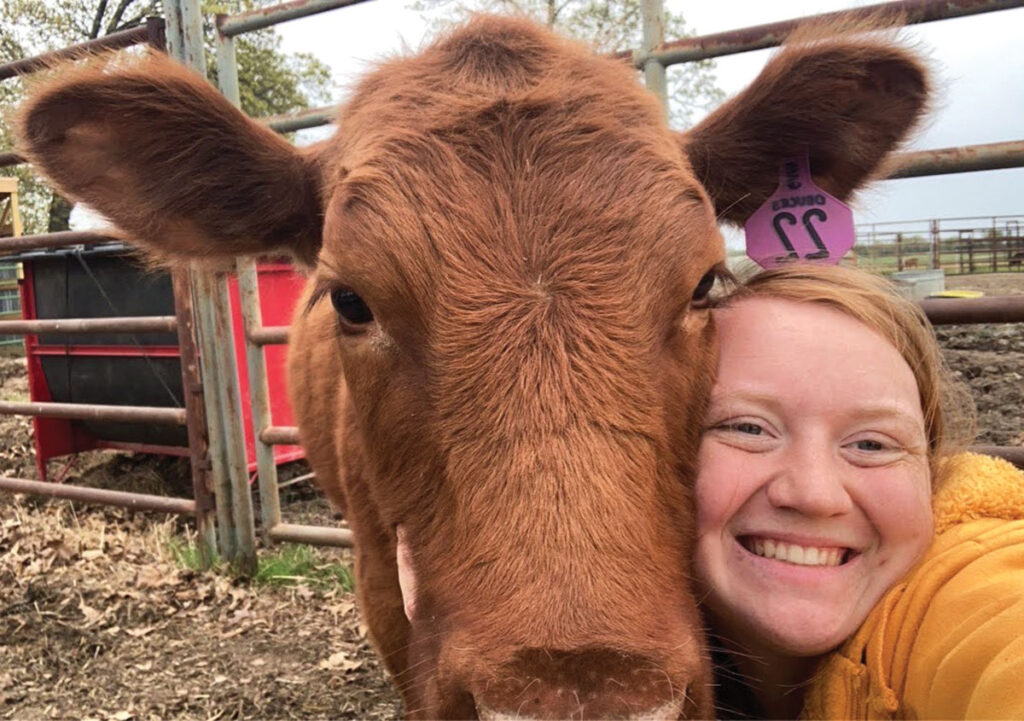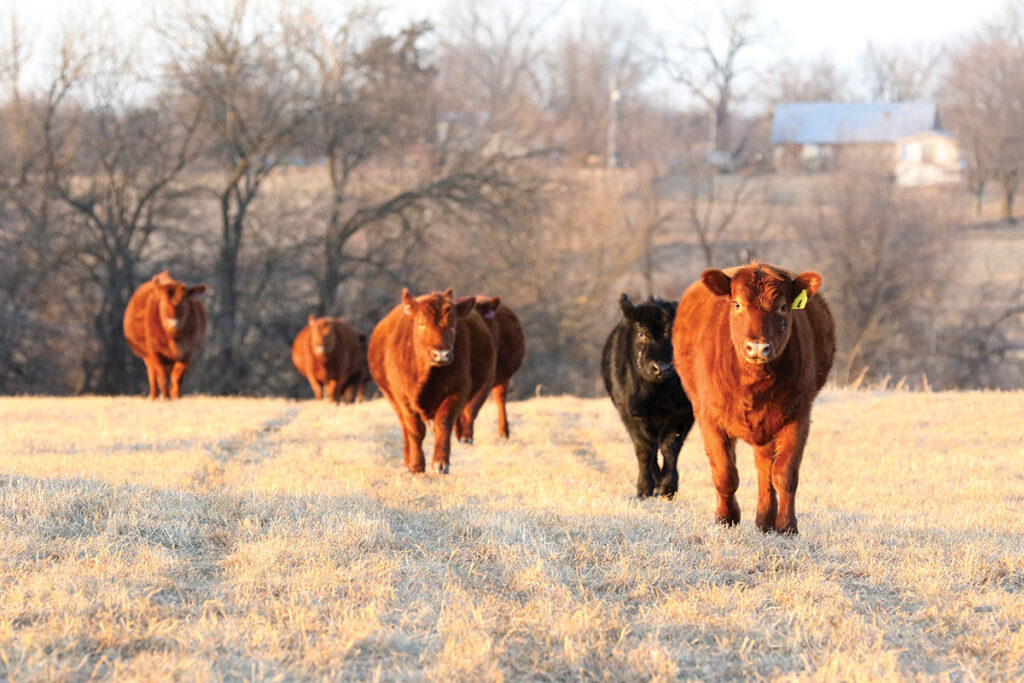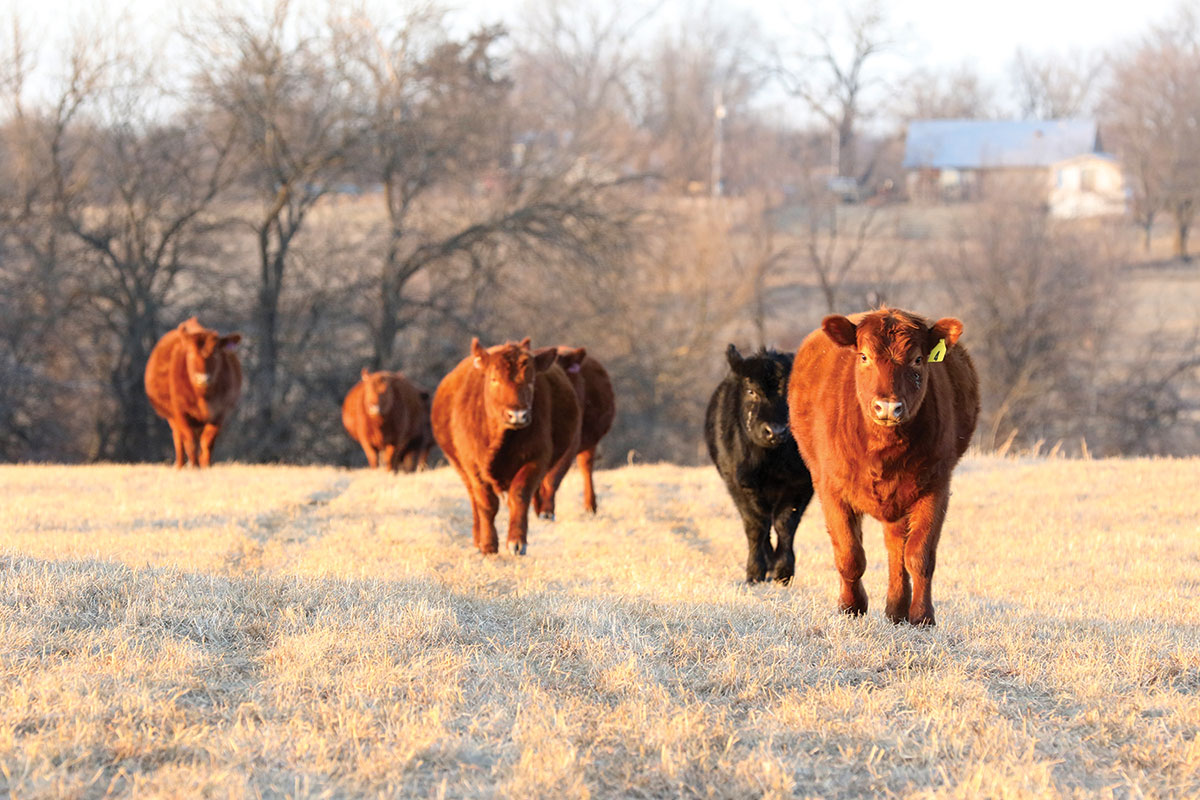
Young cattlewoman is building her own Red Angus herd
CROSS TIMBERS, MO. – As Bayleigh Hunziger approached her freshman year in high school and becoming a member of FFA, her dad, Dave, said she would use rabbits or cats as part of her SAE (Supervised Educational Experience).
“They were the only critters I had,” Bayleigh recalled with a laugh. “Dad said, ‘Absolutely not.’”
In 2016, she, her parents, Dave and Kyla Hunziger, and younger brother Eli partnered to start their own cattle operation. Bayleigh was familiar with farming and agriculture before the start of their herd. Her grandparents, Keith and Wilda Pitts, have cattle, hogs and “lots of chickens.”
“They were commercial cows, with a little Brangus, Angus, a little of everything,” Bayleigh recalled. “At the auction, a red cow came through and I knew she was going to come home with me because I needed a cow that looked like me; Jenny came home with me.”
By the time she was a sophomore at Skyline High School, Bayleigh had become more involved in the Hickory County Cattlemen’s Association and had begun to explore other breeds.
“I sat down and talked to Kevin Piper because I knew I wanted to branch out a lot,” she recalled. “I wanted a different breed of cattle, but I wasn’t sure which one. He helped get me set up, and I went and talked to Dan Lacy, the president of the Missouri Red Angus Association, and they helped me get everything off the ground.”
Bayleigh attended a Red Angus sale and purchased three bred cows with calves at their side. That purchase was the beginning of Nova Red Angus.
“The people who owned them [Matt and Jennifer Boatright of Maplewood Acres Farms in Sedalia] were just the best and gave me a bunch of tips I really needed,” Bayleigh said. “We ended up buying our first Red Angus bull from them the next spring.”
Bayleigh’s parents have stuck with their commercial cattle and the Red Angus bull, and Eli got out of the cattle business, but Bayleigh has gone full steam ahead with Red Angus.
“I have the majority of the cows, and the majority of them are red,” she said, adding that she owns 16 cows in the herd.
Moving toward Red Angus was more than their color, even though that trait didn’t hurt.
“They have that maternal side I was looking for,” Bayleigh said. “With Grandpa raising Brahman and Brangus, I wanted to steer away from the ‘crazy cows.’ It’s nice to go out in the pasture with them when they have calved, tag that baby, and give them shots and the mommas, while they are protective, aren’t going to eat you alive in the field.”
She added that milk production and calf growth are other factors that influenced her purchase.
All of Bayleigh’s Red Angus and Red Angus-crosses are registered.
“The crossbreds perform at a higher rate because they pull from the other breeds,” she said. “I feel it is important to register them, and build up those EPDs.”
Bayleigh’s herd is focused on Red Angus production, but she has some experience with other cattle breeds, specifically Highlands and Pinzgauers.
“The summer of my eighth-grade year, Tracee Riley [a Scottish Highland and Pinzgauer breeder near Preston, Mo.] came to our 4-H club meeting, and she was looking for some kids to show cattle. I didn’t know at that point what Highlands were. In the summer, I show for Tracee, and it’s kind of branched out a little this last year. I ended up helping other kids show as needed. I showed a Longhorn this year, and it was really fun.”
She added that Tracee has been one of her strongest supporters in her journey to own cattle, and Bayleigh recently purchased a Pinzgauers from her.

While she enjoys her experience with other breeds, Bayleigh wants to continue to build her Red Angus herd.
“The Red Angus are easy keepers, not saying that Highlands and Pinzgauers aren’t, but Dad had a little role and say in what I could and couldn’t do. I told him I wanted Shorthorns, but he said no because color doesn’t sell,” Bayleigh said. “Circling back around, we did end up with reds, but I needed something that would sell well and that was popular in the area. Red Angus is on the rise, and they are red.”
As Bayleigh expands her herd, she is evaluating other Red Angus genetics.
“I want to explore how to make a better bull, and right now, I have a little bull we are keeping an eye on, but I want to get into the bull side of things,” he said. “I want to raise animals that will produce better animals.”
To improve her herd, Bayleigh has carefully retained her top-performing females.
“If we have one that requires a lot of maintenance, we will take it to the sale barn,” she said. “We’ve been building on that, and I think they are better, solid, stocky cows. We’re down to just one line of my Red Angus and are looking to see what bull would work the best with these cows.”
Both Bayleigh and Dave are AI-certified, and plan to implement an AI program for the herd this year.
“I feel like diversifying is much more accessible this way,” Bayleigh said.
While she is working to improve the herd’s genetics, that is only part of the equation for high-quality cattle.
“They can have the best EPDs in the world and not have a strong topline or something like that,” she said. “I want to be mindful of the EPDs and the physical characteristics.”
Her time in the show ring has helped her look at different characteristics and traits of cattle.
“That’s not just for show animals,” she said. “That’s for productive females or bulls. Getting to see the different breed types also helped me.”
The 20-year-old is a graduate of State Fair Community College in Sedalia, Mo., with a degree in animal science and is currently a junior majoring in agriculture education major at Missouri State University in Springfield, Mo. Once in the classroom, she hopes to take the lessons she learned from the farm and the show ring to her students.
“I want my kids to enjoy and have a passion for agriculture as much as I do,” Bayleigh said. “I know it won’t always be the case, but I hope they get a little excited when I get excited when we are doing our livestock units.”







